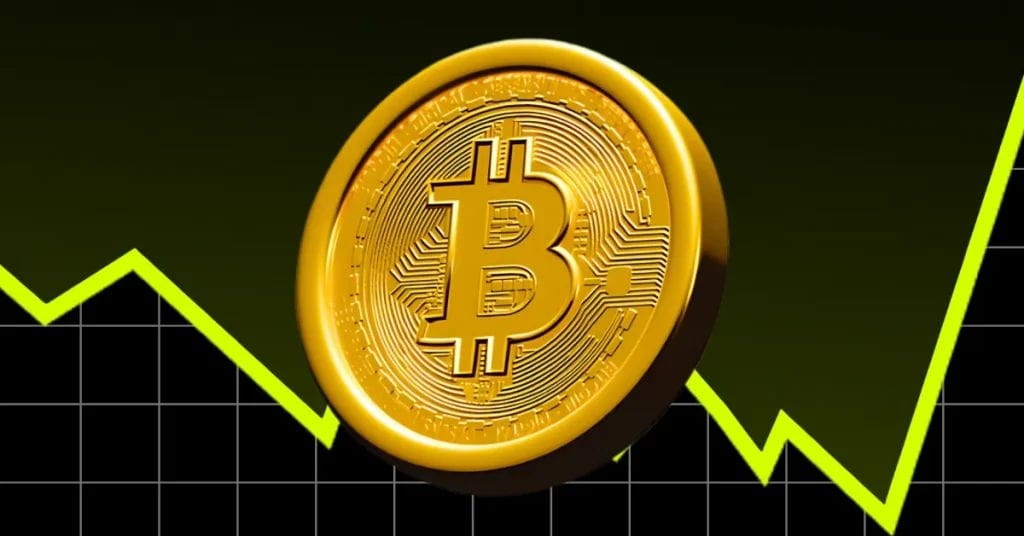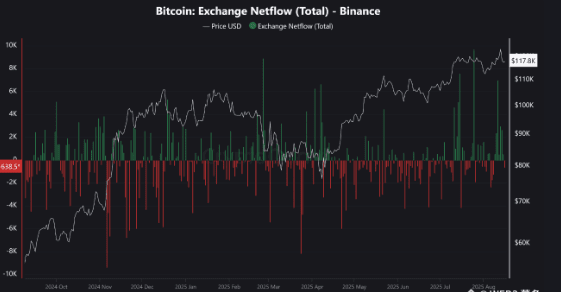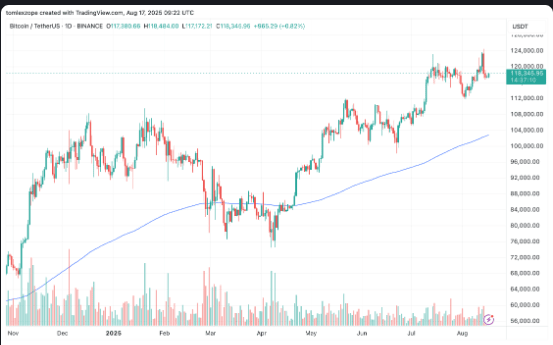Bitcoin's violent fluctuations: The cooling period after new highs
On August 14, Bitcoin briefly broke through $124,000, setting a new historical high, and market sentiment was instantly ignited, with calls for the 'return of the bull market' rising one after another.

However, the good times were short-lived, as the price quickly fell back to around $118,000 the next day, causing market excitement to turn to caution.
Entering the weekend of August 16, Bitcoin did not continue its strong trend but instead consolidated around $118,000, lacking directional breakthroughs. This trend significantly cooled market sentiment, leading investors to wonder: Is this a buildup for a surge, or a depletion of upward momentum?
The answer may be found in on-chain data.
On-chain signals: Binance inflow volume increases
According to CryptoQuant data, analyst BorisVest pointed out that Bitcoin may still face selling pressure in the short term. The key reasons are:
Binance's net Bitcoin flow has turned positive — this means Bitcoin is being transferred to exchanges rather than out to wallets. Historical experience shows that capital inflows to exchanges often indicate that holders intend to cash out.
Meanwhile, outflow volume decreases, indicating that investors' 'long-term holding willingness' is weakening.
From the market structure perspective, this signal often appears during the so-called 'distribution phase': main funds and whales gradually transfer chips to retail investors.

Whales' selling and buying support
BorisVest further analyzes that the difference between perpetual contracts and spot prices indicates that there is still active buying in the market. This also explains why Bitcoin does not drop linearly but shows a 'drop-rebound-drop' fluctuation structure.
In other words, while large funds are continuously releasing selling pressure, market demand still exists, but this demand actually provides good liquidity for whales' selling.
Why pay attention to Binance?
As the largest cryptocurrency exchange by trading volume globally, Binance serves as a major market stage. Data shows that when Bitcoin hits new highs, Binance's Bitcoin reserve significantly increases, indicating that more chips are being transferred to the exchange for sale.
After the price peaked, demand gradually weakened. Once buying support is insufficient, selling pressure will be rapidly amplified. In simple terms, whales are accelerating their selling, while retail investors become the ones taking over.
Short-term risks and market rhythm
Combining on-chain signals, a clearer conclusion can be drawn:
Medium to long-term trend: Bitcoin is still within a bull market channel.
Short-term risk: In the next 1-2 weeks, selling pressure may continue to dominate the market; Bitcoin may still face adjustment pressure.
The current state of Bitcoin resembles a 'marathon runner who has completed the full course', possessing long-term potential but indeed needing short-term adjustments.

Investor response strategies
For novice investors, it is recommended to focus on the following points:
Avoid chasing highs — currently in the chip distribution phase, recklessly increasing positions carries significant risk.
Focus on key support — if $118,000 is breached, the market may continue to decline.
Maintain a long-term perspective — the bull market structure remains unchanged, and short-term fluctuations do not alter the medium-term trend.
Control positions — maintain liquidity and avoid blindly going 'all in'.
Summary
Bitcoin's recent rise and fall is essentially a phase fluctuation within the bull market. On-chain data shows:
1. Binance reserves increase
2. Outflow volume decreases
3. Whales are gradually selling off when buying pressure is strong
Therefore, short-term selling pressure cannot be ignored; the market may continue to fluctuate or even make slight corrections. However, from a longer cycle perspective, the logic of Bitcoin's bull market remains solid.
In summary:
The bull market remains unchanged, but the short-term bitcoin needs adjustment; novice investors should refrain from impulsive entry.
